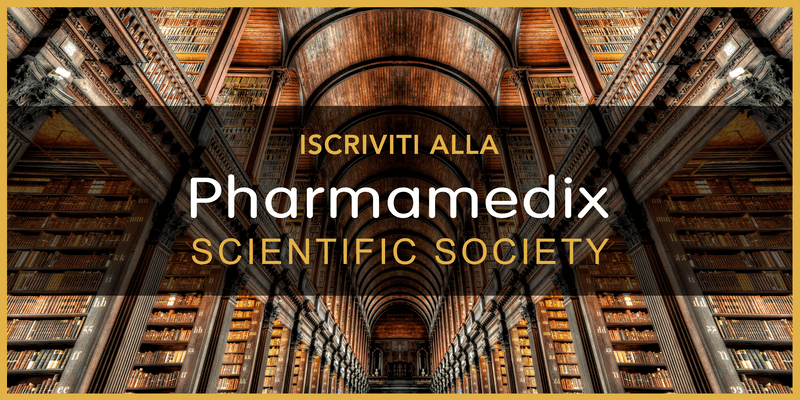Gonorrea
Bibliografia
Quali fonti bibliografiche considerare per la Gonorrea?
Le informazioni contenute nella ricerca Pharmamedix dedicata alla Gonorrea sono state analizzate dalla redazione scientifica con riferimento alle seguenti fonti.
- Acharya N. et al., J. Ethnopharmacol., 2016, 181, 236.
- Bignell C. et al., Int. J. STD AIDS, 2013, 24 (2), 85.
- Boniface P.K. et al., J. Ethnopharmacol., 2016, 191, 216.
- Centers for Disease Control and Prevention – CDC, MMWR Recomm. Rep., 2014, 63 (RR-02), 1.
- Centers for Disease Control and Prevention – CDC, MMWR Recomm. Rep., 2015, 64 (RR3), 1.
- Chomnawang M.T. et al., J. Ethnopharmacol., 2009, 122 (3), 445.2009
- Cook R.L. et al., Ann. Intern. Med., 2005, 142 (11), 914.
- Crisholm S.A. et al., J. Antimicrob. Chemother., 2010, 65 (10), 2141.
- Cybulska P. et al., Sex Transm. Dis., 2011, 38 (7), 667.
- Epicentro, Gonorrea (o blenorragia) – Aspetti epidemiologici, http://www.epicentro.iss.it/problemi/gonorrea/epid.asp (accesso: luglio. 2017).
- Erasmus L.J. et al., Afr. J. Tradit. Complement. Altern. Med., 2012, 9 (4), 591.
- Fifer H. et al., NEJM, 2016, 374 (25), 2504.
- Golparian D. et al., Antimicrob. Agents Chemother., 2012, 56 (5), 2739.
- Gonorrhoea – Annual Epidemiological Report 2016 [2014 data] https://ecdc.europa.eu/en/publications-data/gonorrhoea-annual-epidemiological-report-2016-2014-data (accesso: luglio 2017).
- Guerrero R., Rimedi naturali per combattere le allergie, 2017, Newton Compton Editori
- Hook E.W. et al., Clin. Infect. Dis., 2015, 61 (7), 1043.
- Kirkcaldy R.D. et al., Clin. Infect. Dis., 2014, 59 (8), 1083.
- Latini A., Infezioni sessuali batteriche e protozoarie, 2017, Cics Editore srl.
- Masci Walter, Omeopatia - Tradizione e attualità, 2003, Tecniche Nuove.
- Mogbojuri O.M. et al., J. Complement. Integr. Med., 2016, 13 (3), 221.
- McNally L.P. et al., Clin. Infect. Dis., 2008, 47 (2), e25.
- Obolskiy D. et al., Phytother. Res., 2009, 23 (8), 1047.
- Page-Shafer K. et al., Clin. Infect. Dis., 2002, 34 (2), 173.
- Petousis-Harris H. et al., Lancet, 2017, DOI: http://dx.doi.org/10.1016/S0140-6736(17)31449-6
- Singh A.E. et al., Sex Transm. Dis., 2015, 42 (6), 331.
- Sherrard J., Berlow D., Genitourin. Med., 1996, 72 (6), 422.
- Shu Z. et al., Am. J. Chin. Med., 2016, 44 (2), 227.
- Unemo M. et al., Microbiol. Spectr., 2016, 4 (3), doi: 10.1128/microbiolspec.EI10-0009-2015.
- Unemo M. et al., Lancet Infect Dis., 2017, 17 (8), e235.
- Van Dyck E. et al., J. Clin. Microbiol., 2001, 39 (5), 1751.
- Wansi J.D. et al., J. Ethnopharmacol., 2016, 190, 328.
- World Health Organisation - WHO, 1993, Research guidelines for evaluating the safety and efficacy of herbal medicines.
- World Health Organization – WHO, WHO Guidelines for The Treatment of Neisseria gonorrhoeae, 2016 http://apps.who.int/iris/bitstream/10665/246114/1/9789241549691-eng.pdf?ua=1 (accesso: luglio 2017).
- World Health Organization – WHO, Sexual and reproductive health – Scientist warn thar antibiotic resistant gonotthoea is on the rise, 2017, 7 luglio http://who.int/reproductivehealth/topics/rtis/amr-gonorrhoea-on-the-rise/en/ (accesso: luglio 2017).

